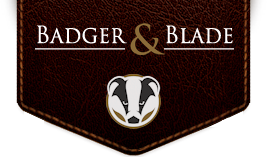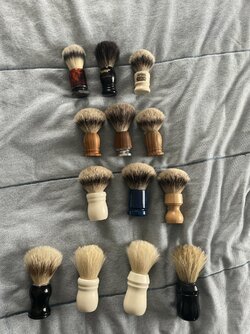I am a firm believer of starting with hot water in a cup and soak the brush, then a small amount of hot water on the soap to bloom.
By the time I am done getting everything prepared I pour the water off the soap into my Captain's bowl, take the brush and give the tip a little squeeze.
Then to the soap for some swirls and then start the lathering in the bowl.
If I have a thirsty soap, add a bit of water.
If it is too watery a few more swirls of soap.
I suck at face lathering.
I also have boar brushes that require a little more finesse.
Bottom line, just start playing around with different methods and soaps and brushes and it will all come together for you eventually.
You will find out how different soaps and brushes and water amounts work together.
Experience is the best teacher.
Just my two cents.
YMMV
HTH
M
By the time I am done getting everything prepared I pour the water off the soap into my Captain's bowl, take the brush and give the tip a little squeeze.
Then to the soap for some swirls and then start the lathering in the bowl.
If I have a thirsty soap, add a bit of water.
If it is too watery a few more swirls of soap.
I suck at face lathering.
I also have boar brushes that require a little more finesse.
Bottom line, just start playing around with different methods and soaps and brushes and it will all come together for you eventually.
You will find out how different soaps and brushes and water amounts work together.
Experience is the best teacher.
Just my two cents.
YMMV
HTH
M




